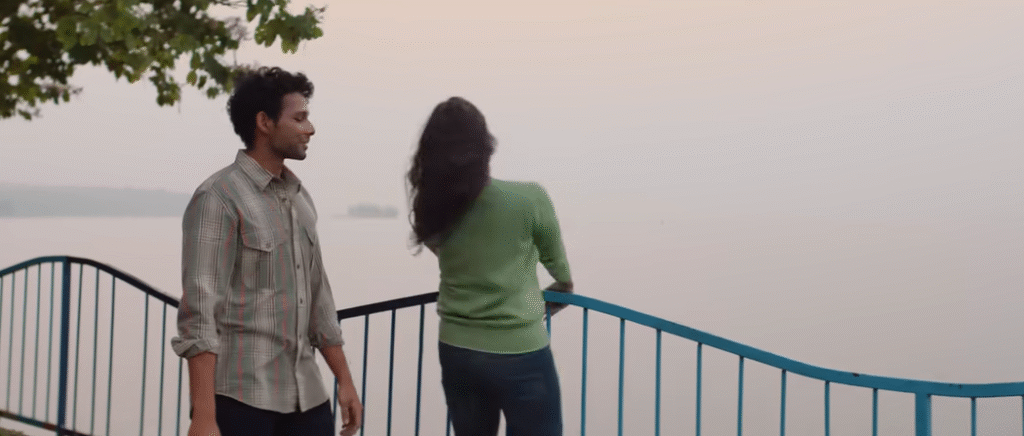Even though it was never given a legal release, Dhadak 2 has accomplished something very uncommon: it has become one of Pakistan’s most watched movies. Incredibly powerful in its narrative and emotionally stirring in its performance, this romantic drama has crossed national boundaries not with consent but simply through resonance. Movie listings and streaming app banners don’t identify its presence in Pakistani homes; instead, torrents, VPN-enabled streams, and shared drives that travel from Karachi to Lahore are its main sources.
In recent weeks, more and more Pakistani viewers have been talking about the movie online, particularly in closed Telegram groups, Reddit threads, and film enthusiast circles. In order to stream or download the film, many people are getting around government restrictions by using tech-savvy techniques. Discreetly sharing links, passing gadgets from hand to hand, and feeling that watching this movie is more about collective defiance than amusement make it a modern-day whisper network.
Its incisive depiction of caste-based discrimination, a theme that echoes the inflexible social class divisions that many Pakistanis are accustomed to, is what makes Dhadak 2 so compelling. Siddhant Chaturvedi’s portrayal of Neelesh is noticeably better than his previous roles, capturing a subdued storm of repressed rage and innocence shattered by institutional exclusion. A remarkable emotional maturity characterizes Triptii Dimri’s return as Vidhi, who plays a woman torn between inherited privilege and the uncomfortable truth.
Film Bio Table
| Attribute | Details |
|---|---|
| Title | Dhadak 2 |
| Release Date | August 1, 2025 |
| Director | Shazia Iqbal |
| Lead Cast | Siddhant Chaturvedi, Triptii Dimri, Anubha Fatehpuria |
| Genre | Romantic Drama, Social Commentary |
| Production Companies | Dharma Productions, Cloud 9 Pictures, Intromagine Pictures |
| IMDb Rating | 8.2/10 (IMDb Page) |
| Language | Hindi |
| Remake Of | Pariyerum Perumal (2018 Tamil film) |
| Major Theme | Casteism, Identity, Social Oppression |
| Ban Status in Pakistan | Officially Banned (as per Bollywood ban in Pakistani cinemas) |

Although it is officially prohibited because of Pakistan’s long-standing ban on Indian films, the actual situation is very different. Many Pakistanis are viewing this movie through informal networks and decentralized platforms, just as they did with Pushpa or Pathaan. Surprisingly, the censorship has increased interest by fostering a sense of urgency and curiosity. It tends to spread more quickly and deeply when stories that address collective pain are prohibited.
The film’s themes of identity loss, systemic alienation, and educational oppression have notably sparked conversations in a number of Pakistani youth organizations, college societies, and underground film circles. Given that rural students frequently fight for equal access to prestigious universities, these issues seem especially pertinent in this country. Despite his academic promise, Neelesh’s character is constantly reminded of his lower status, which reflects the frustrations of innumerable students in Pakistan who face financial and linguistic obstacles.
Among Pakistani viewers, the film’s intensely violent and humiliating emotional climax has provoked strong reactions. These instances of subtle discrimination—disrespecting credentials, making fun of dialects, and undermining accomplishments—feel remarkably similar to the class-based microaggressions that are common in Pakistani workplaces and educational institutions. The events of Dhadak 2 are set in India, but their emotional coordinates are instantly understood on the other side of the border.
It is noteworthy that Dharma Productions has remained remarkably silent throughout this organic success. Instead of going through a typical marketing flurry, the studio chose to be more subdued. That restraint was especially effective in a setting where public relations noise frequently has an overwhelming effect. The film’s subtle marketing allowed viewers to find it rather than be sold on it, reflecting the subdued suffering of its story. For viewers in Pakistan, this gave Dhadak 2 a sense of uncovered truth rather than propaganda.
The way to get in tells its own tale. Some people watch the movie through VPNs that are configured to India or the US, hiding IP addresses to gain access to otherwise geo-restricted platforms. Others use bootlegged downloads that are seeded by torrent clients or pirate forums. These actions are not unique; rather, they are part of a broader behavioral shift among media consumers in Pakistan who are growing more skilled at navigating the digital world. It becomes a participatory, even political, act to watch itself.
A generation that grew up watching Bollywood romances finds that their interest is redirected rather than eliminated by the ban. The urge to see a movie like Dhadak 2 rises even further when it transcends escape to confront harsh realities. One more indication of how integrated Indian cinema is despite attempts to break the connection is the deluge of reviews, reaction videos, and discussions that have flooded Pakistani social media platforms.
It may have initially confused some people that Karan Johar chose to link Dhadak 2 to the Dhadak brand. It was rejected as a glitzy, superficial re-make of the Marathi classic Sairat in 2018. The sequel, however, shocked both reviewers and viewers because it was based on the much gritty Pariyerum Perumal. The way it handles caste—raw, unafraid, and nuanced—is especially inventive. This audacity has struck a chord with both Indian critics and Pakistani viewers who are eager for films that have frank conversations about survival, power, and inequality.
Despite piracy, this kind of film influence has social repercussions. When scholars cite Dhadak 2 in class discussions or students relate to made-up protests, the movie transcends its narrative and becomes a mirror. It also shows how common struggles transcend fabricated barriers by avoiding restrictions to reach Pakistani screens.
The film’s popularity despite not being shown on conventional channels highlights a crucial point: laws cannot restrict the telling of true stories. Because of its well-written script, emotionally charged performances, and socially conscious story, Dhadak 2 has been incredibly successful at capturing audiences’ attention across a wide range of demographics. Not all Pakistani viewers have simply viewed it. They’ve accepted that.

